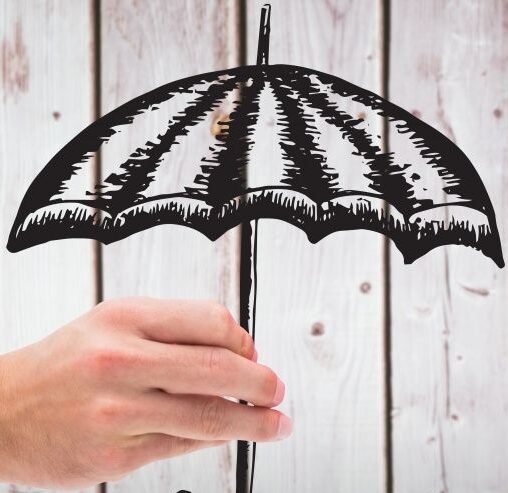Did you know that nearly 60% of all fatal crashes on U.S. roads are multi-vehicle accidents? These complex collisions often lead to tricky liability issues. It’s vital for drivers to know how to prove fault. We’ll walk you through the key steps and strategies for handling liability in these accidents.
Key Takeaways
- Understand the importance of accident reconstruction in determining fault
- Learn how to gather critical evidence from the accident scene
- Analyze vehicle damage patterns to identify the primary cause of the collision
- Recognize common factors that contribute to multi-vehicle accidents, such as right-of-way violations and distracted driving
- Protect your legal rights and ensure you receive the compensation you deserve
The Importance of Accident Reconstruction
Accident reconstruction is key in figuring out who was at fault in crashes with multiple vehicles. Experts look at things like skid marks, where the cars stopped, and what people saw. They use this info to recreate the accident and find the main reasons it happened.
Gathering Evidence from the Scene
The first thing in accident reconstruction is to collect all the evidence from the accident spot. This means:
- Measuring skid marks and where the cars ended up
- Talking to witnesses to get a timeline of events
- Looking at police reports and other documents
Analyzing Vehicle Damage Patterns
Looking at how the cars were damaged also helps. Analyzing vehicle damage patterns shows how the cars hit each other and how fast they were going. This is key in figuring out why the accident happened and who was to blame.
By using evidence from the scene and car damage analysis, experts can make a clear picture of what occurred. This helps in deciding who was responsible in multi-car accidents.
Proving Fault in Multi-Vehicle Accidents
Figuring out who was at fault in a multi-vehicle crash is tough. It means looking closely at traffic laws and what each driver did. This is key to figuring out who should pay and making sure everyone gets fair compensation.
It’s important to see if any drivers failed to yield the right-of-way, were distracted or impaired, or did other negligent behaviors that led to the crash. We also look at how much each person was to blame, using comparative negligence.
To figure out who is liable, we collect and look at different kinds of evidence. This includes:
- Eyewitness accounts
- Traffic camera footage
- Vehicle damage patterns
- Skid marks and other physical evidence from the scene
By looking at these things and the applicable traffic laws, experts can work out how much each driver was to blame. This is key in deciding who pays and making sure everyone gets what they deserve.
Proving fault in a multi-vehicle accident takes a detailed look and a good grasp of the traffic laws and comparative negligence ideas. With a full review, we aim for a fair outcome that helps everyone involved.
Conclusion
Dealing with proving fault in multi-vehicle accidents is complex. It’s important to know how accident reconstruction and gathering and analyzing evidence work. This helps you make a strong case and protect your rights.
First, you need to investigate the accident well. This means documenting the scene and looking at how the vehicles were damaged. Then, you can figure out who was at fault by using comparative negligence. This ensures a fair outcome. Knowing how to determine liability in multi-vehicle collisions helps you stand up for your rights and get the compensation you deserve.
It might seem hard to prove fault in a complex accident, but with the right steps and evidence, you can do it. Being informed and taking a strong approach lets you take charge of your situation. This way, you can get the justice you’re looking for.
FAQ
How can I prove fault in a multi-vehicle accident?
To prove fault in a multi-vehicle accident, you need to look closely at the evidence. This includes things like accident reconstruction, vehicle damage, witness statements, and police reports. By figuring out what happened first and any traffic laws broken or careless actions, you can make a strong case for who was at fault.
What is the role of accident reconstruction in proving fault?
Accident reconstruction is key in showing who was at fault in a multi-vehicle crash. Experts look at the scene’s physical evidence, like skid marks and where the vehicles landed. They use this to work out what happened and why the crash occurred.
How do I use vehicle damage analysis to prove fault?
Looking at how cars were damaged can tell us a lot about the crash. It shows the angles and speeds of the vehicles involved. This info can back up what witnesses say and what reconstruction experts find, making your case stronger.
What are the key traffic laws that may be relevant in a multi-vehicle accident?
Important traffic laws include rules about who goes first, yielding, not paying attention while driving, and other careless actions that might have caused the crash. Knowing these laws and how they fit the crash helps prove who was at fault.
How does the principle of comparative negligence affect fault determination?
The principle of comparative negligence says more than one person might be to blame for a crash. By looking at what each driver did, we can share the blame based on how careless they were. This affects who is legally responsible for the accident.

